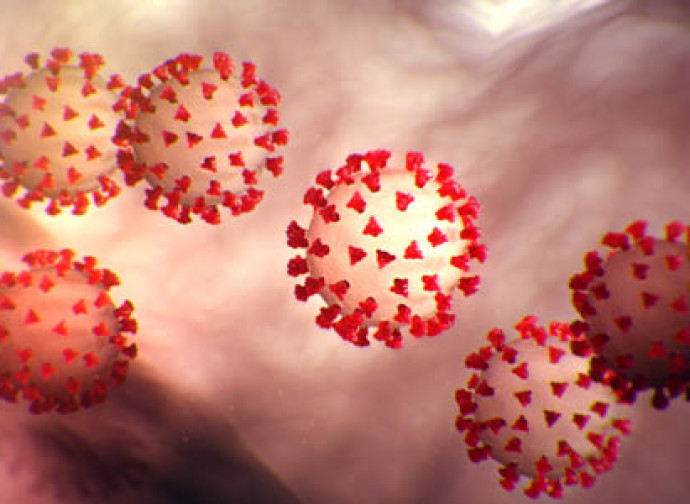British Medical Journal guidelines treat Covid
Many are the therapies for the Coronavirus, and the British Medical Journal has updated the guidelines on how to manage the various situations that arise. Often lacking, however, are those who put them into practice, beginning with the oft lamented non availability of many general practitioners, who should be the first dyke to staunch the epidemic.

The official narrative about Covid-19 circulated through the mass media is based on a series of scientistic and fideistic dogma not open to any objections at all. Intolerance has become one of the features characteristic of the governance of this epidemic. In particular, never to be challenged is a key concept in the current health care scenario; the virus cannot be stopped, cannot be fought against, and the only thing we can do is impose lockdowns, isolated at home like during the Plaque of 1348, hoping we don’t catch the disease and end up in the inevitable infernal circle of intensive care units.
While it is true that this virus is spreading in many countries, not all of them have adopted measures like Italy which, recently, adopted the European version of the Chinese model, a model also followed by other European political leaders – like in Ireland – where ethical permissiveness goes hand in hand with illiberal tyranny towards the epidemic.
Nonetheless, as previously mentioned, there are countries where efforts are being made to provide MDs with appropriate guidelines for dealing with the epidemic, and a case in point is Great Britain. The prestigious British Medical Journal recently published an article with updated guidelines on how to deal with Covid-19 cases. This article should be brought to the attention of all the negationists of therapeutic possibilities which, among other things, include ever new scientific developments such as the ozone therapy practiced, for example, in some hospitals in North Eastern Italy.
What do the British Medical Journal’s (BMJ) guidelines say? Firstly, the management of the case of a person infected by Covid-19 mostly depends on the severity of the disease and focuses on the following principles: isolation at a suitable location; infection prevention and control measures; symptom management; optimized supportive care; and organ support in severe or critical illness. Regarding severity, consider whether the patient can be managed at home. Generally speaking, patients with asymptomatic or mild disease can be (and should be, we would add) managed at home. This would prevent the overcrowding of emergency facilities or the like, perhaps shifting personnel and beds from other wards, where receiving treatment are patients with diseases no less important than Covid-19.
The BMJ says that admitted to an appropriate health care facility should only be patients with moderate or severe disease, assessing the frailty of persons upon admission. It is necessary to monitor patients closely for signs of disease progression. Only patients in a critical condition require intensive care, and discussion on admission to intensive care when necessary pertains to the critical care team. How are patients at home to be treated? The BMJ is explicit: first of all, provide symptom relief as necessary. This may include treatments for fever, coughing, breathlessness, and also psychological symptoms such as anxiety. The BMJ suggests considering a 7-10 day cycle of systemic corticosteroid therapy (cortisone) for adults with severe or critical disease. Moderate-quality evidence suggests that systemic corticosteroids decidedly reduce mortality in patients with severe and critical disease, and probably reduce the need for invasive ventilation.
What about antibiotics? They are useful, especially if there is a clinical suspicion of bacterial over-infection. Antibiotics may be necessary in patients with moderate, severe or critical disease. According to BMJ, they are always to be given to patients with suspected sepsis, or if the patient meets high risk criteria, basing the therapy on clinical diagnosis, local epidemiology and susceptibility data, and local treatment guidelines. The British authors also cite other therapies selected on the clinical presentation of the disease. They refer to oxygen therapy, intravenous fluids, venous thromboembolism prophylaxis, and high-flow nasal oxygen.
In brief, there is no shortage of what can be done. Often lacking, however and unfortunately, are those who actually apply these therapies. More and more people are complaining about the shortage or non availability of general practitioners, who don’t make house calls, advise patients over the phone to take antipyretics, or quite simply send everyone who has the symptoms of a cold or a cough to go for a swab, thereby overcrowding the structures involved, or requesting admission to a hospital for persons who could be treated at home, for their own benefit and that of hospitals.
It would be necessary for the Ministry of Health and the Regions to issue clear indications that general practitioners and pediatricians constitute the first dyke to staunch the spread of this virus. Quite naturally, many indeed are the MDs who already expedite that role with both skill and dedication, but it is necessary for everyone, no one excluded, to adopt these good practices. As we have already written, the overcrowding of hospital wards can provoke serious consequences for a huge number of chronic patients, causing real epidemics of tumors, heart diseases, and chronic degenerative diseases that are not ‘breaking news’ and never mentioned in the mainstream mass media, but represent a much more concrete threat than Covid-19.




